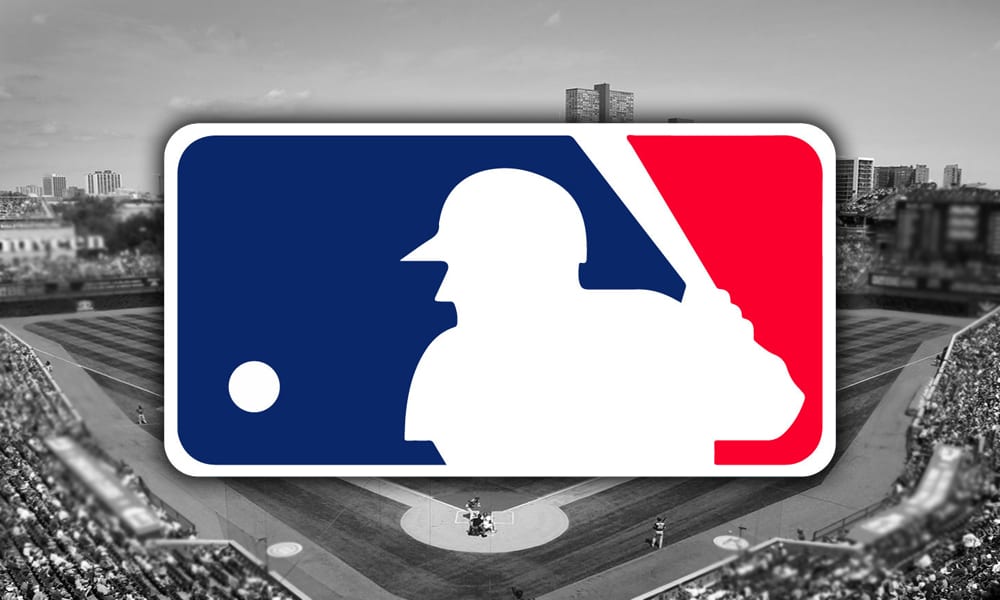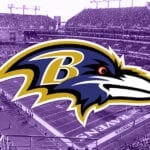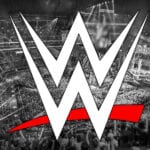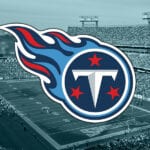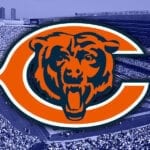We have officially wrapped up one of the more exciting trade deadlines in recent years and resulted in a lot of movement around the league. To give you an idea of this year’s trade deadline impact, it was reported that ten players that were in this year’s All-Star Game, were traded. That is the largest amount of All-Star players to change teams within a single season. The Chicago Cubs and Washington Nationals were some of the biggest sellers at the deadline, while other teams like the New York Yankees and Los Angeles Dodgers made several notable pickups.
Winners of the Deadline:
Chicago White Sox, Los Angeles Dodgers, San Francisco Giants, New York Mets
Grading Criteria:
Teams in contention will receive higher grades for adding depth and power that will genuinely help their postseason runs, while non-contending teams will receive higher grades for adding prospects that can be tools for the future. However, given the nature of players at the trade deadline essentially being rentals, the highest grades for any team will be given to those that address a need while maintaining top prospects and/or giving up as little as possible in return.
American League East:
Boston Red Sox: B
The Red Sox didn’t make a ton of waves in comparison to the rest of its division, but they really didn’t have to. Some great names ended up in this division, but the Red Sox are the clear division winners, with a seven-game lead over the second-place Yankees. Their biggest addition was Kyle Schwarber from the Nationals, in exchange for pitching prospect Aldo Ramirez. They also acquired RHP Hansel Robles from the Twins and LHP Austin Davis from the Pirates, in exchange for prospect Alex Scherff and infielder Michael Chavis, respectively. Overall, they seem to have gotten a fair trade for their acquisitions, and despite being one of the teams being in on Anthony Rizzo, they did not make any unnecessary big splashes.
New York Yankees: B+
The Yankees get a ‘B+’ grade for this deadline, because, although they made some great acquisitions and quite a bit of them at that, it doesn’t really change their overall season. Anthony Rizzo from the Cubs and Joey Gallo from the Angels were the most notable additions to the team, and while those are excellent players to have on your team, it still doesn’t change the fact that the Yankees are not contenders. However, no top prospects were given up from the Yankees, and the additions add some extra depth and power to the lineup.
Toronto Blue Jays: B
The Blue Jays made their main goal to address a key concern for the team — pitching. The Blue Jays acquired several pitchers who can help both the starting and bullpen staff. They also got one of the more talked about pitchers available at the deadline in José Berríos from the Twins. The only downside is they had to give up some of their top prospects, RHP Simone Woods Richardson, and INF/OF Austin Martin to make it happen.
Baltimore Orioles: C
The Orioles traded RHP Shawn Armstrong for cash considerations to the Rays and traded away SS Freddy Galvis to the Phillies for minor-league RHP Tyler Burch. The team is in the last place in its division, so it truly wouldn’t have made sense to make any huge moves, but there wasn’t even a slight effort to improve the current roster, which is why Baltimore gets the lowest score in the division.
American League Central:
Chicago White Sox: A
The White Sox mark another clear division-winner, but they still made great moves at the deadline to ensure their security in the postseason. Their most notable acquisition was Craig Kimbrel from the Cubs, who will not only obviously boost their bullpen, but their eighth and ninth inning relievers, between Kimbrel and Liam Hendricks. While the White Sox would have more than likely won the division even if they had chosen to not make any moves, they earned the ‘A’ grade because they made substantial additions to the roster that will very much aid them into the postseason.
Cleveland Indians: C
Cleveland is another team that realizes they are not in contention this year and didn’t make any notable moves, as it wouldn’t have made much sense. However, they did pick up a speedy outfielder in Myles Straw from the Astros and made room on their payroll by trading LF Eddie Rosario to the Braves for Pablo Sandoval, and releasing Sandoval once the trade was made. Overall, though, nothing happened that is going to greatly benefit the team.
Detroit Tigers & Kansas City Royals
I lumped these two teams together because they each made a couple of trades, but nothing that is going to really improve the team, leading them each to earn a ‘D’ grade.
Minnesota Twins: B
The Minnesota Twins had a great approach to the deadline and knowing they had sought-after players like Berríos and used that to their advantage. With the Berríos deal and others, the Twins stacked up a lineup of prospects that are highly ranked, some close to being ready for the big leagues, and ultimately continue to benefit the team in the long run.
American League West:
Houston Astros: B
The division-leading Astros wanted bullpen help, and that’s exactly what they got. They acquired four relievers in RHP Kendall Graveman and RHP Rafael Montero from the Mariners, RHP Yimí Garcia from the Marlins, and RHP Phil Maton from Cleveland. They got what they wanted without giving up anything major, and stayed under the luxury tax in doing so as well.
Oakland A’s: B-
The most notable moves from the A’s included acquiring OF Starling Marte from the Marlins and LHP Andrew Chafin from the Cubs. However, the mistake they made was giving up potentially too much. The A’s traded away one of their top pitching prospects, Jesús Luzardo, to make it happen, which just doesn’t seem feasible considering the “rental” aspect of what these trades imply.
Seattle Mariners: B
The Mariners added some infield and pitching depth, although many fans were not in agreement with the move to trade closer Kendall Graveman to the Astros. However, the Mariners added depth without giving up too much in return and keeping themselves in the hunt for the pennant race.
Los Angeles Angels: C
The Angels were another team looking to add pitching, which they definitely did, although they weren’t huge names. As goes for other teams, though, the Angels are not really in a position to be making those big moves, so the more quiet trades they made, made sense for the circumstances. They acquired RHP Janson Junk and RHP Elvis Peguero from the Yankees, and LHP Sam Selman, RHP Ivan Armstrong and RHP Jose Marte from the San Francisco Giants as a result of those trades.
Texas Rangers: C
The Rangers were essentially left with no other choice than to trade Joey Gallo after being unable to extend him, although it meant a hit for the team. The Rangers ended up with a lot of prospects as a result of their trades, but truthfully, they probably could have gotten a little bit higher ranked prospects for Gallo, at least.
National League Central:
Milwaukee Brewers: B
The most notable acquisitions for the Brewers were getting SS Willy Adames from the Tampa Bay Rays and getting INF Eduardo Escobar from the Arizona Diamondbacks. Both add defensive ability and run production, which will help the Brewers in the postseason.
Cincinnati Reds: B
The Reds were able to improve their bullpen without giving away too much in return, and landing RHP Luis Cessa and LHP Justin Wilson from the Yankees and RHP Mychal Givens from the Rockies. While the team isn’t particularly in contention, the additions address a need and do not hurt the team overall.
St. Louis Cardinals: B-
Like most teams, the Cardinals wanted to build up their pitching staff and acquired LHP Jon Lester from the Nationals and LHP J.A. Happ from the Twins in order to do so. However, given their current situation, it would have made more sense to either get younger pitchers or promising prospects instead, as a way to help them in the long run.
Chicago Cubs: B
You could count this deadline as a total loss for the Cubs, considering star players Javier Báez, Kris Bryant, Anthony Rizzo, and Craig Kimbrel were shipped out, but that was ultimately to be expected, and the Cubs got great returns for them. Again, the Cubs are a team that realizes they are out of contention and are in a rebuilding phase due to an inability to extend the players previously mentioned. Some of the better prospects acquired by the Cubs were OF Kevin Alcantara and RHP Alexander Vizcaíno from the Yankees and OF Pete Crow-Armstrong from the New York Mets.
Pittsburgh Pirates: B
The Pirates are in a similar situation to the Cubs — trading away bigger names as they undergo a rebuild, and loading up on younger players and prospects in the process. They also got a pretty good return for each trade, like getting prospects INF Tucupita Marcano, OF Jack Suwinski and RHP Michell Miliano from the Padres in exchange for Adam Frazier.
National League East:
New York Mets: A
The Mets almost entirely filled every gap they needed to fill heading into the postseason, with my personal favorite acquisition being Javier Báez from the Cubs. Once Francisco Lindor is off of the IL, it will be so fun watching him and Báez turning double-plays. Aside from that, the Mets also got RHP Trevor Williams from the Cubs and LHP Rich Hill from the Rays, which will give them needed depth to the pitching staff as aces Jacob deGrom and Noah Syndergaard remain on the IL as well.
Atlanta Braves: B
The Braves addressed the needs of pitching and outfielders, with some of their acquisitions including LF Eddie Rosario from Cleveland, OF Adam Duvall from the Marlins, and RHP Richard Rodriguez from the Pirates. Solid acquisitions, nothing really lost in the process, resulting in their ‘B’ grade.
Philadelphia Phillies: B-
The Phillies did one of my least favorite things, trading away a top prospect, a pitching prospect at that, in RHP Spencer Howard. However, they weren’t really left with much of a choice. Just 4.5 games back in the division and having a pretty scarce farm system, they needed to make that sacrifice to get someone that would help them down the stretch. As a result, they got RHP Kyle Gibson, RHP Ian Kennedy, and RHP Hans Crouse for Howard and other pitching prospects, RHP Kevin Gowdy and RHP Josh Gessner. They were also able to pick up SS Freddy Galvis from the Orioles for RHP Tyler Burch to add some infield depth.
Washington Nationals: B+
The Nationals were another huge seller at the deadline, trading RHP Max Scherzer, SS Trea Turner, LHP Brad Hand, OF Kyle Schwarber, RHP Daniel Hudson, C Yan Gomes, INF Josh Harrison, and LHP Jon Lester. However, they got great returns on those trades in the form of top prospects, some of the most notable coming from Los Angeles for Scherzer and Turner: C Keibert Ruiz, RHP Josiah Gray, OF Donovan Casey and RHP Gerardo Carrillo.
Miami Marlins: B+
The Marlins are in the last place in their division, so the best thing they could have done was trade players for the best prospects available in order to build for the future. That is exactly what they did, and the most notable trades included soon-to-be free agents, OF Starling Marte and closer Yimi García. Marte went to the A’s for LHP Jesús Luzardo, and García to Astros for OF Bryan De La Cruz and RHP Austin Pruitt. These were top prospects in their respective organizations that also fulfill needs in the long term.
National League West:
San Francisco Giants: A
I may be biased, but the Giants are one of the biggest winners of the trade deadline by far, acquiring Kris Bryant from the Cubs for prospects OF Alexander Canario and RHP Caleb Kilian. Not only did they secure a power bat in Bryant that will be a tremendous help in the heated NL West pennant race, but they also gave up far less in comparison to what the Cubs got in return from their other trades. The Giants also reunited with relief pitcher Tony Watson from the Angels, giving up a few more prospects in that trade. Starting pitching is another need that could have been addressed at the deadline, but it seemed the organization wasn’t willing to give away the prospects needed to make that happen.
Los Angeles Dodgers: B
The Dodgers absolutely secured their role of having the best starting pitching staff in the NL West, acquiring Max Scherzer from the Nationals. SS Trea Turner was another great acquisition for the team and definitely made the Dodgers the team that got some of the best available players at the deadline. However, the only reason the Dodgers do not get an ‘A’ grade is that they gave up a lot to make these trades happen. It’s not like they don’t have a great roster as it is, and they have continued to apply pressure in the NL West pennant race. In my opinion, while these are tremendous acquisitions that obviously add even more star power to their lineup, they could have survived without it, and the prospects given up, as a result, were given up unnecessarily. RHP Josiah Gray was their top pitching prospect, C Keibert Ruiz was their top position-player prospect, and RHP Gerardo Carrillo and OF Donovan Casey are both probably the readiest for the big leagues out of those four. And those were just four prospects given up in the Scherzer and Turner trade alone.
San Diego Padres: B
The Padres’ biggest move at the trade deadline was acquiring Adam Frazier from the Pirates for INF Tucupita Marcano, OF Jack Suwinski, and RHP Michell Miliano. The Padres already have an All-Star second baseman in Jake Cronenworth and have a pretty secure infield and outfield already. So, while there didn’t seem to be a huge need for Frazier, I can understand wanting to build depth in the case of injuries. During a game on the night of the trade deadline, Fernando Tatis Jr. exited the game and has been put on the IL for a partially dislocated shoulder, an injury that has continuously plagued him this season. Having that depth will allow San Diego to move their infield players around to fill in the gaps, but I think there could have been another solid infield option if that was their goal and could have resulted in giving up less prominent prospects as a result.
Colorado Rockies: D
I think the Rockies had one of the worst trade deadline results because they had an opportunity to capitalize on the eyes surrounding SS Trevor Story and RHP Jon Gray. Both are free agents at the end of this season, so it would make sense to trade them away in exchange for prospects that can help build for the future and potentially try to resign either or both Story and Gray in free agency. However, the Rockies kept Story and Gray and lost out on the advantage they had to bring in some top prospects, as teams were offering to give up prospects in the top-five range in order to acquire Story.
Arizona Diamondbacks: C
There wasn’t really much the Diamondbacks were able to do at this deadline, given that they literally have the worst record in baseball. However, even they did more to account for the future than the Rockies were able to do, even though Colorado has far more leverage. One of the trades they made included an obvious trade of INF Eduardo Escobar, dealing him to the Brewers in exchange for C/OF Cooper Hummel and 3B Alberto Ciprian. Ciprian is just 18-years-old and clearly has a long development timeline to go, but he has a promising bat and could be used to Arizona’s advantage in the future.


